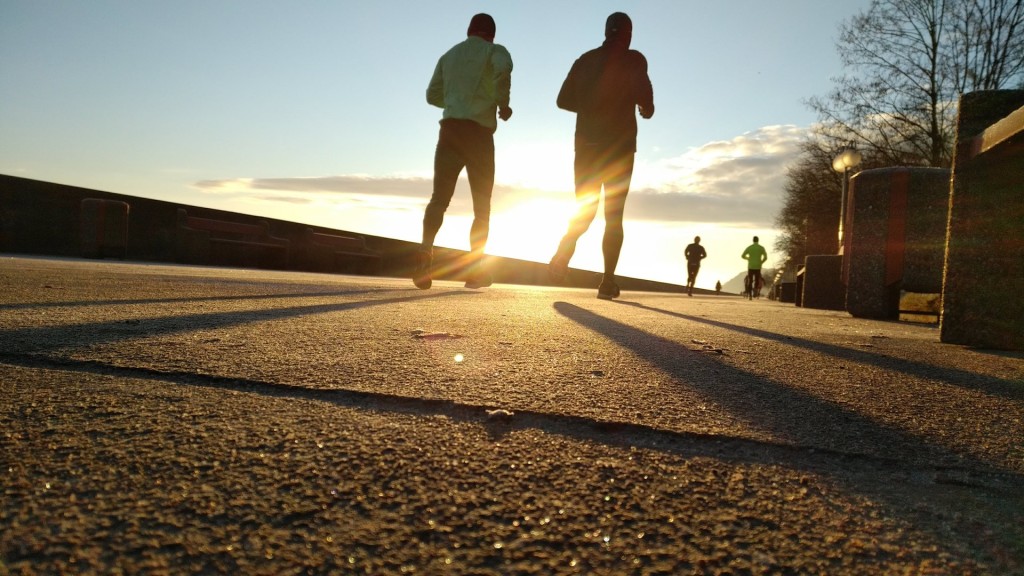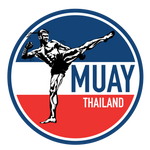Breaking Yourself In – 8 Common Muay Thai Injuries
Training Muay Thai is as physically and mentally rewarding as it is tough on the body and mind. Being a contact sport, you’re regularly striking pads, people or bags and therefore exposing yourself to causing damage to yourself and others. This, coupled with the fact training is intensive and demands full-body engagement, makes injuries common.
Before we get into the list, here’s a quick note on two of the most common injuries: strains and sprains. While the pain and symptoms are similar, the key difference is that sprains are the over-stretching or tearing of ligaments, while strains are the over-stretching or tearing of muscles and tendons. The main visible symptom is that sprains often result in bruising around the affected joint, while strains result in spasms in the affected muscle.
Sprained Wrists
Striking pads or a heavy bag with powerful punches puts a lot of stress of your hands and wrists. If you land at the wrong angle (which could be ever so slight) it can force your wrist to bend the wrong way and overstretch your ligaments. As a result, you could sprain your wrist and end up with pain around the joint, swelling, limited motion and bruising.
If so, you’ll need to tone down the intensity of your training and maybe even take some time out. Wrist sprains can become nagging injuries if not given enough time to recover.
Prevention:
Wrap your hands securely for all types of training and ensure your gloves and on tight. Don’t strike heavy bags without gloves and only use hooks and uppercuts with full power once you’re confident on the right angle for your wrists.
Bruised / Swollen Legs
Muay Thai and Dutch Kickboxing are notorious for targeting the legs. If you’re not used to taking kicks or knees to the legs, you’ll have to endure some pain and limping before you’re conditioned. Even if you’re used to taking leg kicks, it’s easy to end up with bruised legs after a heavy sparring session.
If so, treat them like any bruising or swelling – cold treatment and tiger balm help – and elevate the leg for a short while after training. A relaxing bath can also do wonders.
Prevention:
The easiest way is to check the kicks. Alternatively, you can ensure you “sit” down into the kicks so your thigh muscles tense before the kick lands. You can also condition your legs by building your thigh muscles.
Bruised / Swollen Ankles
As your start out in Muay Thai and learn your range, injuries to ankles are usually common. This is because you’ll be landing a lot of kicks with your feet and ankles on pads, bags and people. Even so, as you go on to spar, it’s not uncommon to land a kick on your partner’s elbows or knees. Shin guards often have very little protection between the foot and the lower shin as to provide flexibility, however, this exposes an area to potential injury.
Treatment is similar to bruised / swollen legs but it’s likely they’ll need closer attention over a longer period as you’ll be putting concerted pressure on your ankles throughout the day as you walk and go about your normal business.
Prevention:
Develop your understanding of distance and range so you land kicks with your shins. Your ankles will become conditioned after a while but there’s only so much they can be conditioned. Ankle guards can be useful in providing some extra cushioning and support for weak and swollen ankles.
Bruised / Swollen Shins
As the point of contact with kicks is our shins, its natural for them to take damage, swell and bruise, especially when starting out and developing your conditioning. As your shins strengthen, the bones calcify and become more resilient. This can take years and isn’t a process you can rush.
Treatment is similar to treating bruised / swollen legs and ankles. Ice and rest is great for immediate treatment but if the bruising / swelling is especially bad, it makes sense to refrain from training for a while.
Prevention:
Be patient when it comes to conditioning. Trying to rush will simply result in more damage and potentially dangerous injuries.
Bruised Ribs
You’re likely to take damage during sparring and drill-work in Muay Thai, especially when taking body kicks and knees. If you don’t block or avoid these, they will cause damage and can make movement and things like coughing very uncomfortable for a while after.
Treating bruised ribs is like any bruised or swollen area. It’s important to maintain good posture when moving around and avoiding crunches or similar motions, as to not irritate the bruising.
Prevention:
Blocking and avoiding body strikes is key to prevention. You can also build the muscles between and around your rib cage to build some natural defence.

Plantar Fasciitis
Cardio is crucial in Muay Thai and the most common method for Nak Muay to build solid cardio is running. Thai fighters often run twice a day up to 15k in total.
Unfortunately regular long-distance running can result in nagging foot injuries. Inflammation of the tissue that runs across the bottom of your foot and connects your heel to your toes (planter fascia) is one of the most common injuries, manifesting in a stabbing pain in and around the heel.
As plantar fasciitis can be long-lasting and sever, there’s a wide variety of treatment methods depending on the severity.
Prevention:
Stretching your lower leg muscles, foot and toes is useful, however, the key points for prevention are in the way you run. Make sure you land on the mid or upper section of the foot rather than the heel and that you’re relaxed rather than tense when running.
Strained Neck Muscles
Developing a strong, diverse clinch game is essential for effective Muay Thai offence and defence. However, if you’re not used to wrestling or someone pulling down and yanking your neck, it’s likely you’re going to get sore and stiff neck muscles after clinching. At first, this can prove extremely uncomfortable and can impact your head and neck movement, however, you’ll condition your neck over time and build techniques enabling you to counter your opponent in the clinch.
Treating a strained neck is similar to treating other strains. Gentle stretching in combination with balms like Tiger Balm or Namman liniment will help loosen the muscles and increase blood circulation.
Prevention:
Properly warming up and stretching your neck muscles before training helps get the blood flowing and loosen muscles. You can also build your neck muscles through exercise and resistance training.
Furthermore, it’s important to develop and vary your clinch technique so you can counter your opponent, especially when they get a strong grip around the base of your skull and neck.
Headaches / Concussion
Being a full-contact sport, you’re going to take strikes to the head when sparring, practising drills and competing. It’s important to be mindful of the impact this has. It’s likely you will get headaches from time to time and whenever you experience this, or any concussion-like symptoms, you need to give your brain a break.
Concussions are serious and can have long-term effects on your brain and mental health. So, if you feel any dizziness or headaches after training, whether immediately or days after, take some time off. If you ever get knocked out, take time out.
It’s a common misconception that you shouldn’t sleep if you have a concussion. In fact, rest is crucial for recover but if it’s severe, you should be supervised and get woken up at regular intervals. Proper rest, fluids and mild pain relievers are the best home treatments. If it’s serious, see a doctor.
Prevention:
Avoid taking full-power blows to the head. Even in sparring, it’s not normal to go 100% unless you’re training for a fight several weeks out from the event. Developing a solid defence will help reduce the damage you take to the head. Don't spar if there are even the slightest signs of an ongoing concussion.
Conclusion
If you’re serious about training Muay Thai, whether for competition, fun or fitness, you’re likely to experience injuries at some point. That’s no reason to scare you aware from the sport, it’s a simple fact of any full-contact sport – even rugby, American Football and other martial arts come with risk of injury.
That said, this list isn’t exhaustive and there are plenty of other types of injuries (and infections, especially to the feet) that you can pick up. Either way, if you understand how to treat and prevent them, they are less likely to have a significant impact on your health inside and outside of training. Furthermore, properly warming up and stretching before sessions and then properly cooling down and stretching after sessions reduces the risk of injury. Getting decent rest, keeping hydrated and eating well between sessions is also key to recovery and reducing the chance of injury.




